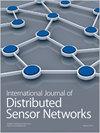A security detection approach based on autonomy-oriented user sensor in social recommendation network
IF 2.5
4区 计算机科学
Q3 COMPUTER SCIENCE, INFORMATION SYSTEMS
International Journal of Distributed Sensor Networks
Pub Date : 2022-03-01
DOI:10.1177/15501329221082415
引用次数: 0
Abstract
User social network-based recommender system has achieved significant performance in current recommendation fields. However, the characteristic of openness brings great hidden dangers to the security of recommender systems. Shilling attackers can change the recommendations by foraging user relationships. Most shilling attack detection approaches depend on the explicit user historical data to locate shilling attackers. Some important features such as information propagation and social feedback of users in social networks have not been noticed. We propose a security detection method based on autonomy-oriented user sensor (AOUSD) to identify shilling attackers. Specifically, (1) the user is simulated as a social sensor with autonomous capabilities, (2) the user interaction model is built based on information propagation, information feedback and information disappearance mechanisms of social sensors, and a user dynamic knowledge graph is formed by considering the variable time function, (3) hierarchical clustering method is used to generate preliminary suspicious candidate groups and graph community detection clustering method is applied on the dynamic knowledge graph to detect the attackers. Then, AOUSD is first simulated on NetLogo and it is compared with other algorithms based on the Amazon data. The results prove the advantages of AOUSD in the efficiency and accuracy on shilling attack detection.社交推荐网络中一种基于自主用户传感器的安全检测方法
基于用户社交网络的推荐系统在当前的推荐领域取得了显著的成绩。然而,开放性的特点给推荐系统的安全性带来了极大的隐患。Shilling攻击者可以通过查找用户关系来更改推荐。大多数先令攻击检测方法都依赖于明确的用户历史数据来定位先令攻击者。社交网络中的一些重要特征,如信息传播和用户的社交反馈,没有被注意到。我们提出了一种基于面向自主的用户传感器(AOUSD)的安全检测方法来识别先令攻击者。具体而言,(1)将用户模拟为具有自主能力的社交传感器,(2)基于社交传感器的信息传播、信息反馈和信息消失机制建立用户交互模型,并考虑可变时间函数形成用户动态知识图,(3)采用层次聚类方法生成初步的可疑候选群,并在动态知识图上应用图社区检测聚类方法检测攻击者。然后,首先在NetLogo上对AOUSD进行了仿真,并与其他基于亚马逊数据的算法进行了比较。结果证明了AOUSD在先令攻击检测的效率和准确性方面的优势。
本文章由计算机程序翻译,如有差异,请以英文原文为准。
求助全文
约1分钟内获得全文
求助全文
来源期刊
CiteScore
6.50
自引率
4.30%
发文量
94
审稿时长
3.6 months
期刊介绍:
International Journal of Distributed Sensor Networks (IJDSN) is a JCR ranked, peer-reviewed, open access journal that focuses on applied research and applications of sensor networks. The goal of this journal is to provide a forum for the publication of important research contributions in developing high performance computing solutions to problems arising from the complexities of these sensor network systems. Articles highlight advances in uses of sensor network systems for solving computational tasks in manufacturing, engineering and environmental systems.

 求助内容:
求助内容: 应助结果提醒方式:
应助结果提醒方式:


